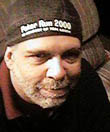|
|
This topic comprises 5 pages: 1 2 3 4 5
|
|
Author
|
Topic: 3-bladed shutters
|
|
|
|
|
John Pytlak
Film God

Posts: 9987
From: Rochester, NY 14650-1922
Registered: Jan 2000
|
 posted 01-10-2004 12:13 PM
posted 01-10-2004 12:13 PM





I never heard that the shutter had any effect on perception of grain. Simplex's Willy Borberg and Kodak's Dr. Fred Kolb did quite a bit of reseach about the effects of radiant energy on the film frame back about 50 years ago. Borberg found that for very high levels of radiant energy, a two-blade shutter was preferred because the film frame had a longer time to achieve a stable position, especially during the second exposure:
"Effect of Gate and Shutter Characteristics on Screen Image Quality", Willy Borberg, SMPTE Journal, October 1957, Volume 66, pages 623-627
Dr. Fred Kolb published several SMPTE papers during the late 1940's and the 1950's, including the use of air pressure to cool and stabilize the film frame, and the use of wet gate projection. Dr. Kolb is still active in retirement, and was one of my mentors at Kodak.
| IP: Logged
|
|
|
|
|
|
|
|
|
|
|
|
|
|
|
|
|
|
|
|
|
|
|
|
|
|
|
|
All times are Central (GMT -6:00)
|
This topic comprises 5 pages: 1 2 3 4 5
|
Powered by Infopop Corporation
UBB.classicTM
6.3.1.2
The Film-Tech Forums are designed for various members related to the cinema industry to express their opinions, viewpoints and testimonials on various products, services and events based upon speculation, personal knowledge and factual information through use, therefore all views represented here allow no liability upon the publishers of this web site and the owners of said views assume no liability for any ill will resulting from these postings. The posts made here are for educational as well as entertainment purposes and as such anyone viewing this portion of the website must accept these views as statements of the author of that opinion
and agrees to release the authors from any and all liability.
|

 Home
Home
 Products
Products
 Store
Store
 Forum
Forum
 Warehouse
Warehouse
 Contact Us
Contact Us




 Printer-friendly view of this topic
Printer-friendly view of this topic








![[thumbsup]](graemlins/thumbsup.gif) the mirror can also be defocused a tad and should have no effect on focus or light colour.
the mirror can also be defocused a tad and should have no effect on focus or light colour.![[Big Grin]](biggrin.gif) ,another way would be to fit a smaller mirror or mask off the mirror.
,another way would be to fit a smaller mirror or mask off the mirror.





